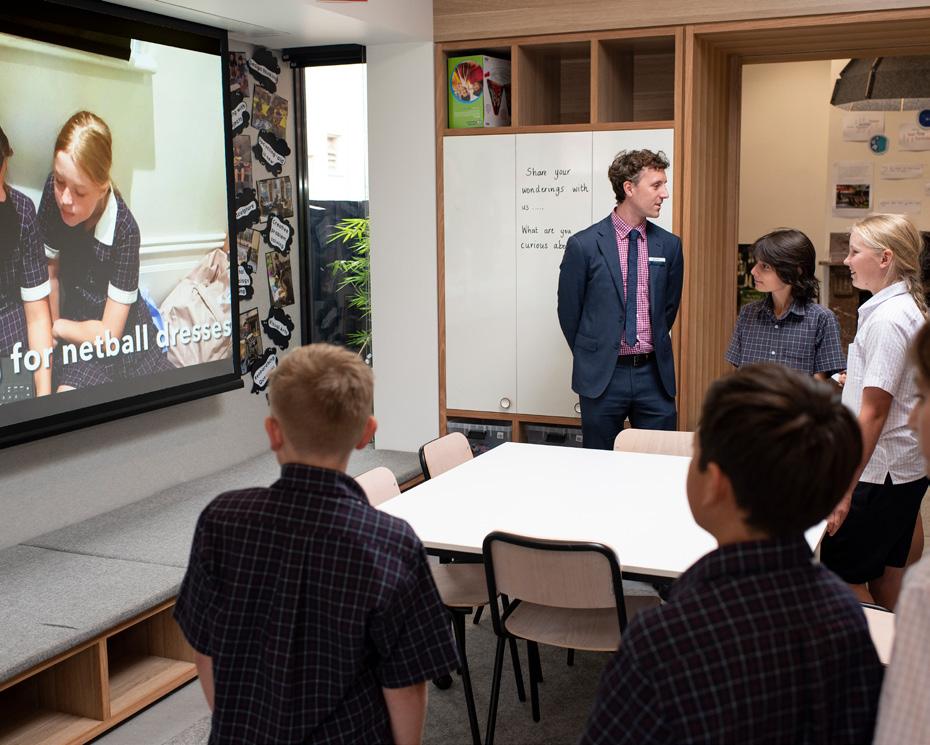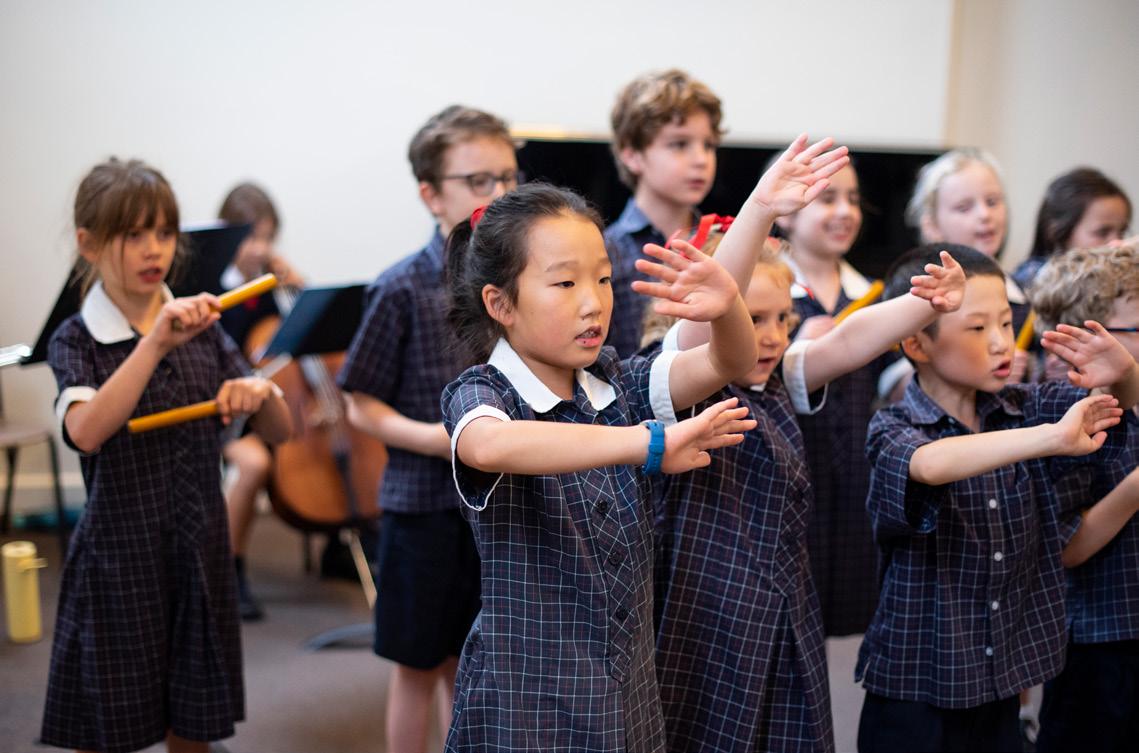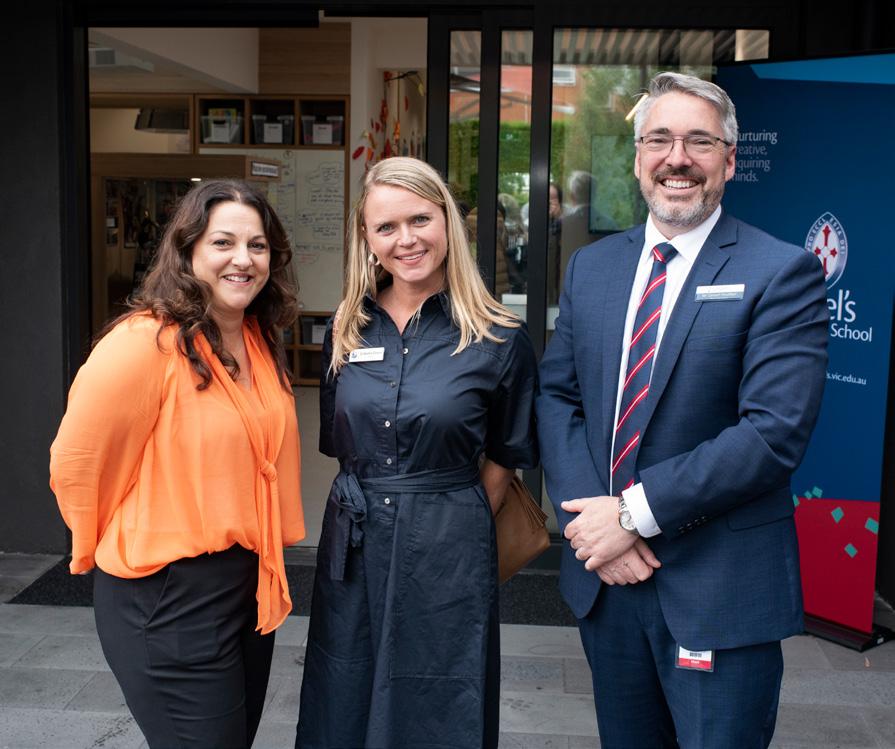
3 minute read
‘Lights like ice-cream sandwiches’
Our new Centre for Inquiry and Innovation
Tuesday 27 March was an exciting day for the Junior School with the opening of the new Centre for Inquiry and Innovation (CII). Although the weather was not kind, students and guests were still able to enjoy the special occasion.
On arrival guests were entertained by solo performances from some of our Junior School students. The formalities began with an Acknowledgement of Country from our Year 6 Co-Vice Captains Amelie (6I) and Tommy (6E) and the Harrison Choir (P-2) performed a traditional Indigenous Australian lullaby sung in Yorta Yorta language. Our Junior School has been a leader within St Michael’s in paying respect to, and learning about, Aboriginal culture, both locally (on Boonwurrung Country) and across the nation. The CII will continue to promote students’ curiosity, engagement and connection to the land, waters and skies.
Mrs Nicole Armatas, Deputy Head and Head of Junior School, led the event, joined by many special guests including Mr Andrew Eddy, Chair of the Board and Mr Gerard Houlihan, Head of the School, staff and the entire Junior School. We were also very pleased to welcome guests including the architect, builders and landscapers and others from the St Kilda community, including the Mayor of the City of Port Phillip, staff from EarthCare, and a leader of the Junction Area Action group representing our neighbours.
At the opening, Mr Houlihan spoke to the students about the importance of wonder and curiosity and explained that the CII is dedicated to the joy and surprise of Inquiry, which is one of the key program areas in the Junior School. It is defined as a philosophy, mindset and a pedagogy and we continue to be influenced by the tenets of the Reggio Emilia Research Project in this regard.
Inside the CII, the different spaces enable our Junior School students to explore ideas, make inquiries and research the many questions that arise during their learning. Students are encouraged to be curious and creative. The feedback and questions that have been generated by the students so far have been enlightening. To give just some examples:
‘I wonder if we could make this a shelter for the homeless?’
‘I wonder why the lights are shaped like ice-cream sandwiches?’
‘I think we have many different rooms to work in like a reading room, thinking room, group thinking spaces, a stress relief room, a research room, group working room and an art room.’ Students are now using the spaces for their classes, Signature Programs and lunchtime clubs. From reading in the Early Years, to learning about the history of the School and making pancakes in the kitchen on Shrove Tuesday, the learning experiences in the CII are interactive, inquiry driven and always complement the important work they do in their class-based-learning.
The CII was designed by Sally Draper Architects, one of Melbourne’s most respected design practices. The practice has received awards for a wide variety of design projects, including many at other schools across Melbourne. However, student voice and agency are integral to St Michael’s and our way of being, so naturally students played a key role in influencing the design of the building and how the spaces are used.
During the design process students expressed the importance of feeling that they were surrounded by nature when learning. Careful attention was therefore given to the landscaping around the CII including a vertical garden that can clearly be seen through the Eastern windows. In collaboration with our maintenance and gardening team, the Environmental and RAP Club students helped plant the shrubs in the vertical garden. And the beautiful playground has provided a new space at the School for informal gatherings, both for students and staff. Importantly, it is a space like no other in the School, as the external areas have been designed to be a retreat and a passive space for play.
School facility designs today require far greater intentionality with regard to the philosophy and teaching practices that must exist within them. Learning spaces are required to empower students to engage in learning experiences that support them to learn through their preferred ‘language’ or multiple modes. The CII is not a homogenous space, and during the design phase, we drew on research and our School vision to inform us on the agility and functionality of the spaces. Creating conditions for rigorous learning that supports every part of an inquiry cycle informed our planning. Further to this, we acknowledge that learning about skills, dispositions and capabilities does not always translate to students developing them. We looked at the various areas of the CII to ensure they provided spaces for students to experience them and be coached to use them. The development of skills and capabilities is enhanced in learning settings that inspire learners to think creatively and critically, and to actively investigate. The CII invites self-direction and requires self-management, with carefully equipped areas where students have easy access to all materials to support their learning. They can choose to work independently or collaboratively, in quiet nooks or larger gathering spaces for robust discussion or reflection.

Our thanks to the architect, builders, landscapers and staff who have helped this vision for a centre that inspires curiosity and nurtures wonder to come to fruition. We know the children will continue to have a plethora of valuable experiences in this space for years to come.
The CII is an inspiring environment where our Junior School students can learn and play. It is just one of a number of important building projects undertaken at the School over the past twelve months to ensure that our students have the very best facilities in which to thrive.


Mrs Nicole Armatas Deputy Head and Head of Junior School


